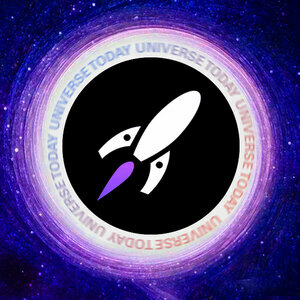Episode 556: A Tour Of The Lagrange Points. Part 2 - Space Telescopes At L2 And Nothing At L3
Lagrange Points. Stable spots in space that you just can’t stop thinking about. What spacecraft work best in which places? What are some amazing ideas that could utilize these regions across the Solar System?
In the last episode, I gave an overview of the Lagrange points, and then went into the details of spacecraft missions sent to L1, the perfect place to constantly observe the Sun, the Earth, or to block radiation coming from the Sun. The best place for a lunar elevator, or a spot to put a space station at the Moon.
This week, we’re going to talk about L2 and L3, the other meta-unstable spots that you can park a spacecraft at.
Our Book is out!
https://www.amazon.com/Universe-Today-Ultimate-Viewing-Cosmos/dp/1624145442/
Audio Podcast version:
ITunes: https://itunes.apple.com/us/podcast/universe-today-guide-to-space-audio/id794058155?mt=2
RSS: https://www.universetoday.com/audio
What Fraser's Watching Playlist:
https://www.youtube.com/playlist?list=PLbJ42wpShvmkjd428BcHcCEVWOjv7cJ1G
Weekly email newsletter:
https://www.universetoday.com/newsletter
Weekly Space Hangout:
https://www.youtube.com/channel/UC0-KklSGlCiJDwOPdR2EUcg/
Astronomy Cast:
https://www.youtube.com/channel/UCUHI67dh9jEO2rvK--MdCSg
Support us at: http://www.patreon.com/universetoday
More stories at: http://www.universetoday.com/
Twitch: https://twitch.tv/fcain
Follow us on Twitter: @universetoday
Like us on Facebook: https://www.facebook.com/universetoday
Instagram - https://instagram.com/universetoday
Team: Fraser Cain - @fcain / [email protected]
Karla Thompson - @karlaii / https://www.youtube.com/channel/UCEItkORQYd4Wf0TpgYI_1fw
Chad Weber - [email protected]
References:
https://www.youtube.com/watch?v=0WN7lS9bpB4
https://map.gsfc.nasa.gov/mission/observatory_l2.html
https://hal.archives-ouvertes.fr/hal-00568378/document
https://www.nasa.gov/mission_pages/stereo/main/index.html
https://www.nasa.gov/mission_pages/stereo/news/entire-sun.html
https://www.youtube.com/watch?v=598UtgxFd1E
https://map.gsfc.nasa.gov/
https://wind.nasa.gov/
http://sci.esa.int/herschel/
https://www.esa.int/Our_Activities/Space_Science/Herschel/The_largest_infrared_space_telescope
https://www.esa.int/Our_Activities/Space_Science/Planck
http://sci.esa.int/gaia/
https://www.youtube.com/watch?v=lxgdcG_NQyA
http://www.russianspaceweb.com/spektr_rg.html
https://www.bbc.com/news/science-environment-49504866
https://www.theatlantic.com/science/archive/2018/07/nasa-james-webb-space-telescope-northrop-grumman-cost/566186/
https://www.jwst.nasa.gov/
http://sci.esa.int/euclid/
https://www.nasa.gov/content/goddard/wfirst-wide-field-infrared-survey-telescope
http://sci.esa.int/plato/
https://www.youtube.com/watch?v=uCTGIxmM-e4
https://www.youtube.com/watch?v=p0SMNucXwgo
http://sci.esa.int/athena/
https://arxiv.org/ftp/arxiv/papers/1211/1211.3462.pdf
https://www.universetoday.com/142896/the-lunar-gateway-will-be-in-a-near-rectilinear-halo-orbit/
https://www.youtube.com/watch?v=q2c7nZB-040

